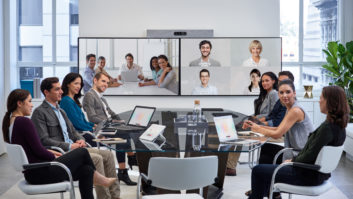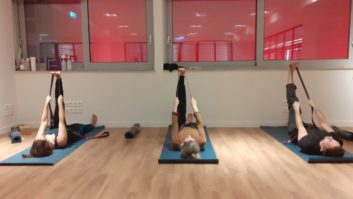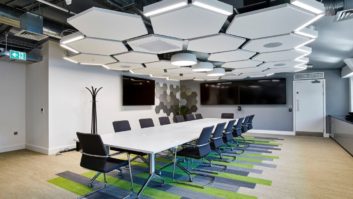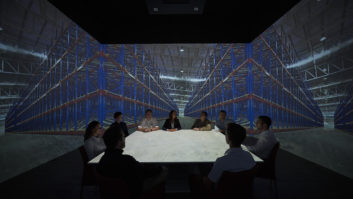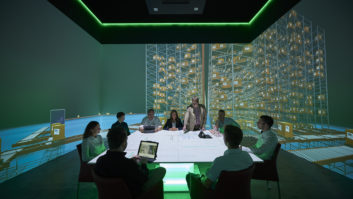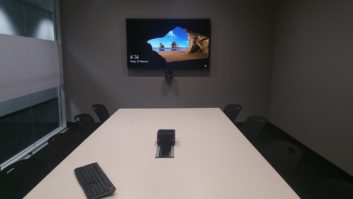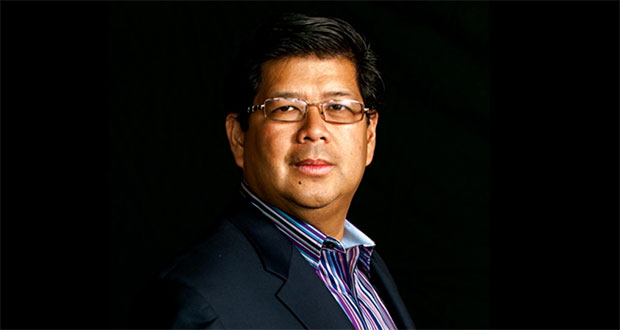
As with the design of rooms, there are numerous types of technology that you can use in your meeting room. In today’s meeting rooms you will normally find a combination of the following: a projector, a monitor or interactive flat panel, a computer, and a telephone or video conferencing system.
There is a wide variety of video conferencing systems to meet the needs of different room styles. Depending on your chosen space, a different camera system can provide you with an increased benefit to the room’s productivity. So which camera system is best for which space?
Let’s start off by identifying the two different types of conferencing systems available: USB Systems and On-Premise Systems. Both of these provide numerous benefits but are also designed to serve different needs in the meeting room. USB systems tend to be highly portable and are easy to set up almost anywhere that has an internet connection. On premise codec model systems take out the middle man, so there is no third-party involvement or connections to servers, important when security is needed during a video conferencing call.
Focus Rooms – The Smallest of Meeting Rooms
Focus rooms are used for private telephone and video conversations or one-on-one meetings. Because they are so small, you want to weigh your options carefully when choosing video conferencing equipment, with small all-in-one systems, like the AVer CAM340+ or the VB342 Video Soundbar.
These types of systems are compact and take up minimal space, so they do not interfere with any of the participants in the room. Also, as USB systems, all-in-one cameras are able to take advantage of third-party conferencing platforms, which reduces technical issues and provides an easy connection experience.
Huddle Rooms – Huddle Your Team
These meeting rooms are normally big enough to hold three to four people for intimate brainstorming sessions. Larger than focus rooms, huddle rooms bring a high level of team collaboration while still providing privacy.
Conferencing cameras in these environments need to have wide FOVs and tend to be on the compact, USB side of the video conferencing equation. Opt for camera systems that require few cords, are easy to install, can be flexibly mounted anywhere and take up little-to-no meeting space.
Small Meeting Rooms – Now We Are Getting Professional
Almost every business has some type of this room available to their teams. Small-to-medium conference rooms are designed for up to 12 people. These rooms are where the professional meetings occur, either between co-workers or clients. There are a lot of choices for a video conferencing unit in this scenario. Both USB and On-Presence devices are suitable. In these spaces mic pickup distance, camera zooms, and AI functions come into play, since the meeting participants are usually spread out around a long, narrow table. The ideal solutions for this room size feature auto-framing and voice-tracking technology to help remote collaborations flow like in-person interactions.
Conference Rooms – When You Have an Audience
Finally, we come to the big rooms. Choosing the right equipment for large conference rooms can be a difficult task. Such rooms can be quite long, so high zooms and quick focusing are needed in any type of camera you use.
In conferencing rooms we suggest relying on premium high-quality cameras for the optimal video conference. On-premise systems and top-of-the-line USB cameras are very adept at meeting the challenges posed by these rooms. So cameras that can maintain clear imaging in high-contrast environments work best and can help to transform any meeting room into a streamlined collaboration hub for both video conferencing and face-to-face brainstorming.
